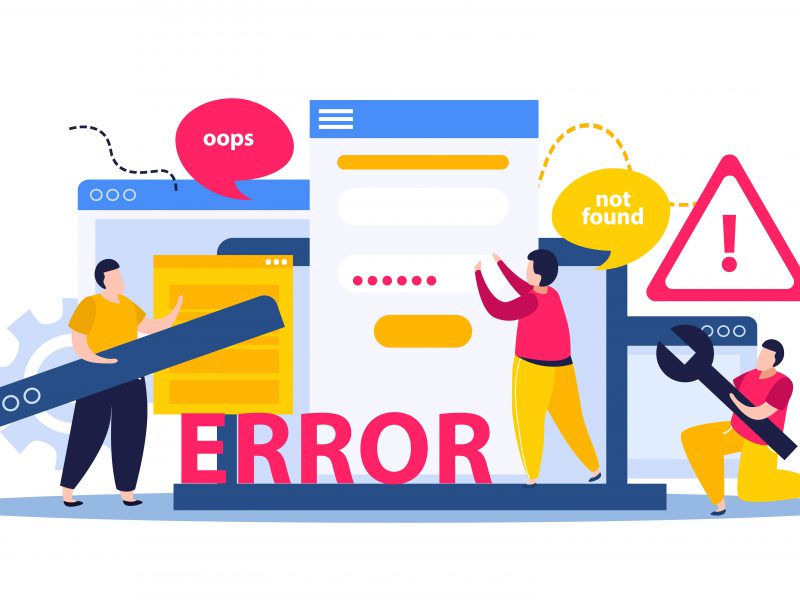In today’s highly connected digital world, the demand for uninterrupted access to services and applications has never been higher. Whether it’s a critical business platform, an e-commerce site, or a public service, downtime can have serious financial and reputational repercussions. Failover is one of the key strategies for ensuring that your system remains available and resilient, even in the face of failures or disruptions.
In this article, we will explore the concept of failover, how it works, its benefits, and how businesses can implement failover strategies to maintain system availability.
What Is Failover?
Failover is a redundancy mechanism used in systems to maintain operations in case of hardware, software, or network failure. It involves switching from a primary system or component to a secondary system (also known as a standby or backup system) with little to no downtime. This transition ensures that users continue to experience seamless service even when the primary system fails.
Failover systems are designed to detect problems automatically and initiate the transition without human intervention. These systems are often part of broader high-availability (HA) and disaster recovery (DR) strategies, which aim to keep critical systems running smoothly and minimize potential losses from downtime.

Why Failover Matters: The Importance of Uptime
For businesses that rely on constant uptime for their operations, even a few minutes of downtime can result in significant losses. According to some estimates, the average cost of IT downtime for businesses can run into thousands of dollars per minute. This makes failover an essential component for companies in sectors like:
- E-commerce: Websites must stay operational 24/7 to facilitate online sales.
- Financial services: Banks and financial institutions must process transactions without interruption.
- Telecommunications: Service providers need to ensure continuous availability of voice and data networks.
- Healthcare: Patient care relies on the continuous operation of critical health information systems.
For these and other industries, failover guarantees business continuity and allows them to meet Service Level Agreements (SLAs) that often include uptime commitments of 99.9% or higher.
Types of Failover Systems
Failover systems are typically classified into different types based on how they operate and the infrastructure they use. Each type has its own benefits and drawbacks, depending on the organization’s needs and the criticality of the application.
1. Cold Failover
In a cold failover setup, the backup system is not running until the primary system fails. This type of failover is often cheaper but results in higher downtime because the backup system has to be initialized, configured, and brought online before it can take over.
2. Warm Failover
In a warm failover scenario, the backup system is running but not fully synchronized with the primary system. It may receive periodic updates and can take over faster than a cold failover system, but some data or services might still be delayed during the transition.
3. Hot Failover
In a hot failover system, the backup system is fully synchronized with the primary system and is ready to take over almost instantaneously if a failure occurs. This type of failover offers the lowest downtime but is often the most expensive because it requires additional infrastructure and continuous monitoring.
4. Active-Active vs. Active-Passive Failover
- Active-Active Failover: In this setup, both the primary and backup systems are running simultaneously, with traffic distributed between them. If one system fails, the other can seamlessly handle the load. This ensures high performance and reliability but can be costly to implement.
- Active-Passive Failover: Here, the primary system handles all operations, while the backup system remains idle until it is needed. This is a more affordable option, but the failover process might involve some delay depending on the system’s readiness to take over.

Failover Architecture and Mechanisms
To implement an effective failover strategy, businesses need to design their systems with the right architecture. There are several components and mechanisms that enable failover to work efficiently:
1. Load Balancers
A load balancer is a crucial component in failover systems. It distributes traffic between multiple servers and monitors the health of each server. If the primary server fails, the load balancer can automatically reroute traffic to the backup server, ensuring users experience no downtime.
2. Heartbeat Monitoring
Failover systems often rely on heartbeat monitoring, where the backup system constantly checks the health and availability of the primary system. When the heartbeat signals that the primary system has failed, the backup is triggered.
3. Data Replication
For failover to be effective, data must be synchronized between the primary and backup systems. Data replication ensures that the backup system has the most up-to-date information when it takes over. There are two types of data replication:
- Synchronous replication: Ensures that data is copied to the backup system in real-time, minimizing data loss.
- Asynchronous replication: Data is copied with a slight delay, which may result in some data loss during the failover process but is more bandwidth-efficient.
4. Cloud-Based Failover
ASPHostPortal cloud hosting already come with built-in failover solutions that can be integrated into your system architecture. Our cloud platforms provide scalability and redundancy, allowing businesses to set up failover across geographically distributed data centers, thereby improving resilience against regional outages or disasters.
Benefits of Implementing Failover
1. Minimized Downtime
The most obvious benefit of a failover system is the reduction in downtime. By switching to a backup system in the event of a failure, companies can keep their operations running without interruption, ensuring users experience little to no service disruption.
2. Improved Customer Experience
Failover ensures that your website, app, or service is always available, leading to better customer satisfaction. Users expect seamless access to your platform, and failover systems help you meet that expectation.
3. Compliance with SLAs
Many businesses operate under strict Service Level Agreements that require them to meet certain uptime thresholds. Failover systems help ensure that you remain in compliance with these agreements, avoiding costly penalties or contract breaches.
4. Business Continuity
Failover is a key component of a larger business continuity plan (BCP). In the event of a disaster, hardware failure, or cyberattack, failover systems ensure that critical applications and services can continue to function without significant downtime or data loss.
Challenges of Implementing Failover
While failover systems provide immense benefits, they also come with some challenges that businesses need to consider:
1. Cost
Failover systems, especially hot failover or active-active configurations, can be expensive to implement. The need for additional infrastructure, continuous monitoring, and data replication increases the overall cost of the system.

2. Complexity
Setting up failover requires careful planning and configuration. It involves deploying redundant systems, synchronizing data, and monitoring health checks, all of which add complexity to the system architecture.
3. Testing and Maintenance
Failover systems need to be tested regularly to ensure they function correctly in the event of a failure. Additionally, maintaining both primary and backup systems adds to the operational workload, as both systems must be kept up-to-date and synchronized.
Best Practices for Implementing Failover
To make the most of your failover system, consider the following best practices:
1. Regularly Test Failover Scenarios
A failover system is only useful if it works when needed. Regularly test your failover scenarios to ensure that the backup system can take over successfully and that data synchronization is up-to-date.
2. Use Geographically Dispersed Data Centers
For maximum redundancy, use geographically dispersed data centers. If one region experiences an outage due to a natural disaster or other localized failure, the backup system in another region can take over.
3. Monitor System Health
Constant monitoring of system health is crucial. Use automated monitoring tools to check for signs of potential failures, allowing you to proactively address issues before they lead to downtime.
4. Plan for Data Consistency
Ensure that your data replication strategies provide the right balance between performance and data consistency. In highly critical systems, synchronous replication might be necessary, while in less critical systems, asynchronous replication might be more appropriate.
Boost Your Website’s Uptime with ASPHostPortal DNS Failover Services!
Never let unexpected downtime damage your reputation or lose potential customers! With ASPHostPortal’s DNS Failover Services, we guarantee uninterrupted access to your website by automatically redirecting traffic to a backup server whenever your primary server goes down.
Why choose ASPHostPortal DNS Failover?
- Instant Traffic Redirection: Ensure seamless user experience even during unexpected outages.
- 24/7 Monitoring: We continuously monitor your website’s performance, catching issues before they impact your visitors.
- Global DNS Infrastructure: Fast response times from anywhere in the world, keeping your website accessible at all times.
- Simple Setup, Reliable Protection: You don’t need to worry about complicated configurations; we handle it all for you!
Choose ASPHostPortal and guarantee maximum uptime with our reliable, high-performance DNS Failover Services! Keep your business online and resilient, no matter what challenges arise.
Act now and protect your website!

Andriy Kravets is writer and experience .NET developer and like .NET for regular development. He likes to build cross-platform libraries/software with .NET.



